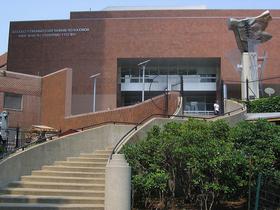Many students choose community college over a traditional four-year university because it is more affordable. However, college tuition costs are rising across the board every year. Attending community college may still be the more affordable option, but it is not cheap.
If you are thinking about attending community college, do some research to learn what kind of costs you can expect and how much financial aid you might qualify for. You should also familiarize yourself with some of the most common financial aid mistakes that community college students make so you can avoid making them yourself.
How Much Does Community College Cost?
When considering community college costs, you must consider more than just tuition. Most community colleges charge for tuition on a per-credit-hour basis, though that is not always the case. The average cost for one year of tuition and fees to attend a public 2-year college is around $3,500 for in-state students. For a public 4-year college for in-state students, the average yearly cost is closer to $9,500. In addition to the cost of tuition and fees, you also have to think about things like school books, housing, and various living expenses like food and transportation. Many community college students can minimize these costs by living at home.
This video looks at some common financial mistakes students make.
Financial Aid Options for Community College
There are several different kinds of financial aid you might apply for to help you cover the cost of community college. Grants and scholarships are generally financial rewards you do not have to repay. There are some, however, on which you might have to pay taxes. Student loans are financial rewards you must repay – some come with high interest rates while others do not. Another option is to work part-time during school through a work-study program. Most students utilize a combination of these financial aid options to finance their education. How much aid you qualify for will depend on several factors, such as your residence, your income, your age, the program you choose to attend, and more.
Common Financial Mistakes of Community College Students
Even though community college is considered more affordable than most four-year universities, you should still try to minimize your costs as much as possible. To avoid paying more for your education than you need to, avoid making these common financial aid mistakes:
1. Not filling out your FAFSA promptly.
The Free Application for Federal Student Aid (FAFSA) becomes available on January 1st of each year. You must fill out this form to apply for federal aid, including grants and scholarships. Filling out this form doesn’t guarantee that you will receive aid, but unless you fill it out you won’t know whether or not you qualify. Surprisingly, the American Association of Community Colleges reports that only 62% of community college students ever fill out the form, and many of them wait until a few weeks before classes start. If you put off filling out your FAFSA, you might miss out on scholarship opportunities.
2. Not applying for school-sponsored aid.
Federal student loans account for a large percentage of the financial aid college students receive, but they are not the only option. Check your college’s website or talk to the admissions office to see what kind of scholarships the college offers. Many community colleges provide need-based and merit-based scholarships, some general and others connected to a specific program. You’ll also need to apply to the school for financial aid to get a work-study job.
This video offers some tips to help college students to avoid financial mistakes.
3. Not looking for outside scholarships.
In addition to checking with your school to see if they offer scholarships, you should also look for private scholarships offered by outside organizations. Many of these scholarships are relatively small (a few hundred dollars at most), but they could help cover your costs for books or living expenses while in college.
4. Borrowing more than you need.
While taking out extra loans to cover your living expenses might be tempting, you might regret that decision when you get your first bill to repay those loans. Consider whether you’ll be attending school part-time or full-time when deciding how much to take in loans, and think about whether you might have time for a part-time job to finance your school books and living expenses. When your student loans come due, they may come with hefty interest fees that can compound quickly, racking up an astronomical amount of debt in a short period. If you can avoid taking out loans, do it!
5. Taking too many classes at once.
Many college students assume that if they take more classes, they’ll receive more financial aid. While many scholarships, grants, and loans require students to maintain full-time status, that doesn’t mean you have to overload your class schedule. If you take on more than you can handle, you might perform so poorly in one or more classes that you have to retake it, which can cost you money. Some loans, like Direct Loans, only require that you be enrolled half-time, and Pell Grants can be adjusted according to your class load.
6. Waiting to repay loans.
While certain student loans do not accrue interest while you are enrolled in school, some do. Ensure you know exactly what kind of loans you have and whether you can receive deferred interest while a student. If you have loans that accrue interest, consider paying that interest while you are in school. If you don’t, the interest will compound each month, driving up your principal balance. That can lead to higher monthly payments when it comes time to repay the loan.
7. Relying too heavily on credit cards.
Credit cards have become so common that many people don’t even bother to carry cash anymore. The problem with credit cards is that it removes you from spending – you don’t feel like you’re paying for anything the same way you would if you paid with cash. Credit cards often come with extremely high interest rates, and if you start to fall behind on payments, you could rack up thousands of dollars in debt over just a few months. If you want to keep better track of your spending, set a budget for yourself and dole out that amount in cash – once the money is gone, you are done spending the month.
8. Ruining your credit score.
While you are in college, you don’t have to worry about things like paying for utilities or rent (unless you live off-campus). But if you make poor financial decisions during college, you may end up graduating with an awful credit score, which will make it hard for you to get your own place and to open utility accounts after you graduate.
If your primary reason for attending community college is to save money, you should take your financial aid very seriously. The more you plan and the more research you do to learn about your options, the more money you can receive to finance your education. Be smart about borrowing money and talk to your advisor to determine what your costs are likely to be and how you can best meet those costs with financial aid options.
Questions? Contact us via Facebook. @communitycollegereview












